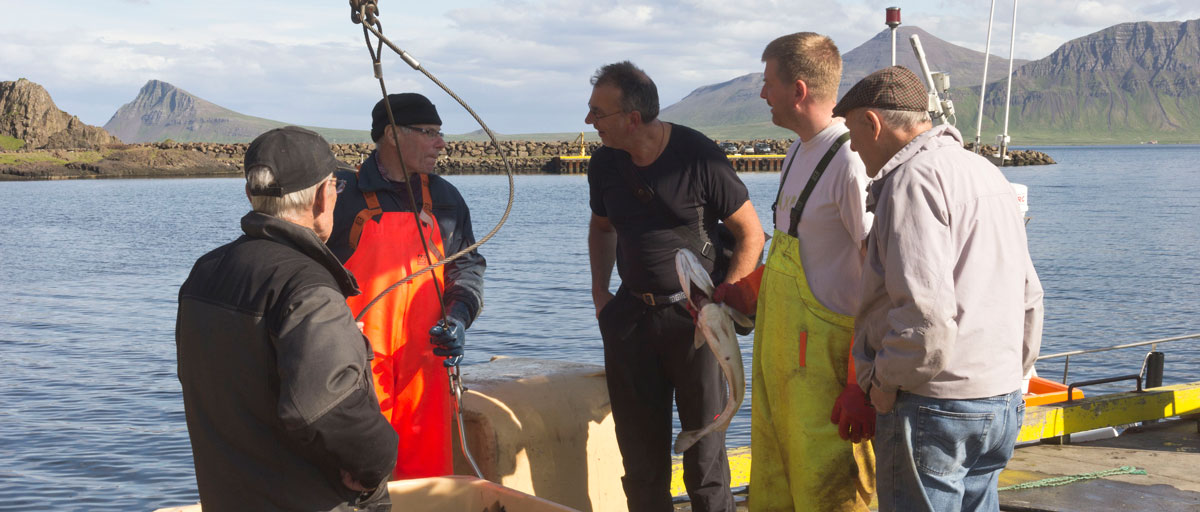Bildtext får vara max två rader text. Hela texten ska högerjusteras om den bara ska innehålla fotobyline! Photo: B. Christensen/Azote
FISHERY MODELS
Making fisheries models more realistic

Current models and assessments designed to help policy-makers develop fisheries guidelines are not realistic in describing the behaviour of fishers. Researchers present a more sophisticated model by reflecting on the diversity and complexity within fishing behaviour. Photo: G. Almqvist/Azote
- Models and assessments supposed to help develop guidelines do not realisticallyreflect the behaviour of fishers
- A new study presents a more sophisticated model by reflecting on the diversity and complexity within fishing behaviour
- The model considers how fishers may differ in motivation, ability, livelihoods and their social networks
Diversity in fisher behaviours are often absent in current models of fisheries. A new study points out how to incorporate them
THE NEXT STEP IN MODELING: Despite improved knowledge and stricter regulations, fish stocks remain overharvested. This is partly because models and assessments that are supposed to help policy-makers develop guidelines are not realistic in describing the behaviour of fishers .
In a new study published in Fish and Fisheries, centre researchers Nanda Wijermans, Kirill Orach and Maja Schlüter together with colleagues from Uppsala University and the Swedish University of Agricultural Sciences present a more sophisticated model by reflecting on the diversity and complexity within fishing behaviour.
We envision a next generation of fisheries models that account for the importance of human behavioural dynamics by including relevant insights from both the social and natural sciences.
Nanda Wijermans, lead author
A poor representation of reality
There are two main reasons why considerations around human behaviour is usually absent from established models:
- Social science-based knowledge about fisher behaviour is rarely included in the literature which is dominated by natural science contributions
- Fisheries management models hardly ever include fisher activity dynamics beyond economic considerations
Key to improve on this is to incorporate insights from social sciences and how to use them in models. Current models tend to focus on fishers’ desire to maximise gratification and avoid punishment. That is often a poor representation of reality, the authors warn.
The model developed by Wijermans and her colleagues is the first to use studies on fishing styles to reflect on behavioural diversity among the fishers. It considers how fishers may differ in motivation, ability, livelihoods and their social networks.

Conceptual representation of the fishing styles with key attributes and decision models. Note that bounded rationality is formalized by agents not being able to anticipate the probabilities and consequences of their actions (for all styles). Click on illustration to access scientific study
Three things to consider
Based on their experience with this model, the authors highlight three things future developers of fishery models should consider:
- Consider the best available social science knowledge and data in order to better include different fisher behaviours
- Take advantage of the diversity of knowledge and sources that are available, including quantitative and qualitative empirical data, expert knowledge, frameworks and theories
- Use the model to assess uncertainties that originate from the diversity of motivations and behaviours among fishers
Concludes Wijermans; “We hope that our synthesis of social science insights on behavioural diversity and our model will help others find and build on insights with more ease. "
Podcast: What it takes to make science and business connect
Methodology
The researchers used literature reviews and modelling for three reasons:
- Provide a synthesis of relevant contribution of social science on behavioural diversity
- Substantiate the little use of knowledge from social science on the diversity of fisher behaviour in fishery models
- Demonstrate model design and use of a next generation fishery model (Agent-based modelling)
The use of agent-based modelling (ABM) was considered particularly suitable because it allowed the researchers to represent and study the underlying processes of behavioural diversity that the social sciences consider key. This enables the understanding of why patterns arise the way they do, and allow for exploration of possible or extreme scenarios. It also facilitated thought experiments to enable researchers and policy designers to think in terms of a complex system, where human behaviour is heterogenous and to place their work into that context. This complements the typical use of models that focuses on the ‘right’ answers (e.g. a prediction of policy response), ‘what-if’ answers (scenario thinking) with “why” answers (how do things work).
Wijermans, N., Boonstra, W.J., Orach, K., Hentati-Sundberg, J., Schlüter, M. 2020. Behavioural diversity in fishing—Towards a next generation of fishery models. Fish and Fisheries, Volume21, Issue5, September 2020, Pages 872-890, https://doi.org/10.1111/faf.12466
For more information, contact lead author Nanda Wijermans:








